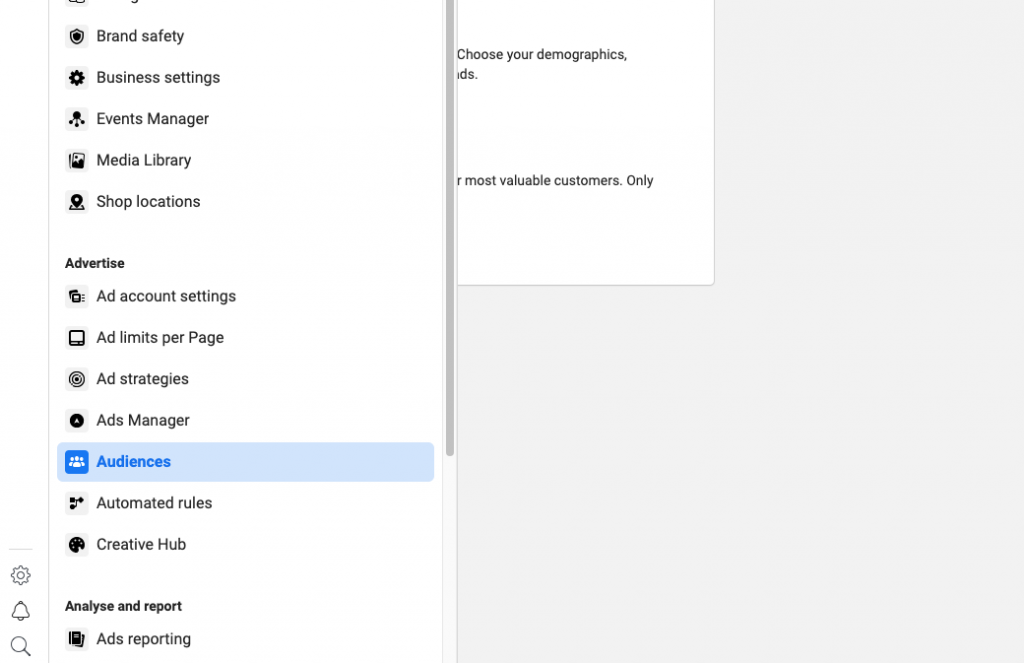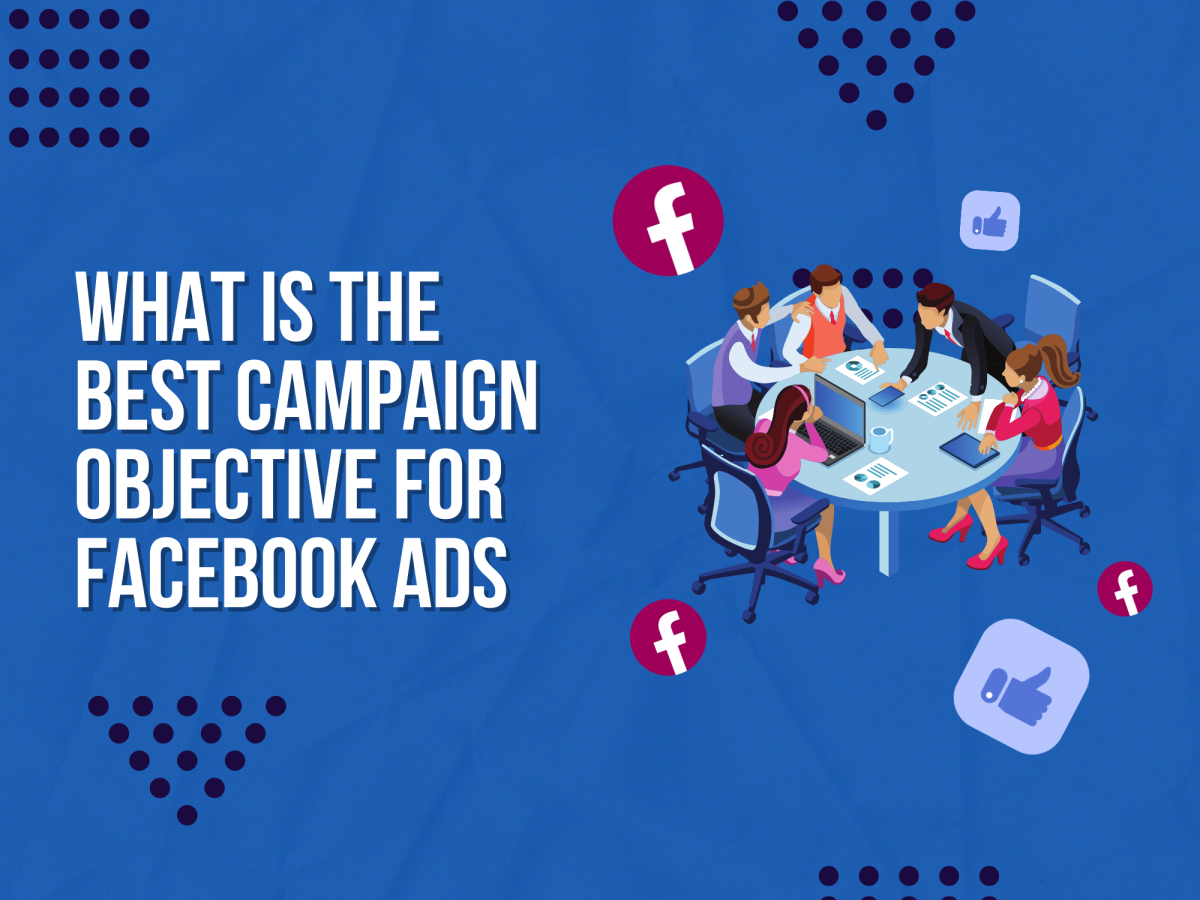Your Facebook campaigns are likely to reach thousands of potential customers. Hopefully, many of these prospects will click through to visit your website.
But there’s one problem.
Sometimes, these individuals just aren’t ready to buy.
They might explore your product selection and click around the store, but what if they close the tab without converting?

Boost E-Commerce ROI: Download Our Free CPA & ROAS Calculator
If only there was a way to reconnect with these prospects after they leave, eh?
(See where we’re going with this?)
With Facebook retargeting ads, you can stay in touch with these potential buyers and recapture their interest later down the line. More importantly, you can effectively drive up your conversion volumes.
Let’s dive into the world of Facebook retargeting, and explore how these tactics can turbocharge your performance.
What are Facebook retargeting ads?
Facebook retargeting allows you to target people who have visited your website or interacted with your ad campaigns.
You can separate your paid social campaigns into two stages. When you’re initially reaching fresh prospects with an ad, this is the prospecting stage.
Once you’ve driven an initial engagement with these prospects, you can move into the retargeting stage of the campaign, where you’re following up with additional messages.
So what kind of interactions can fuel a Facebook retargeting ad strategy?
- Users sharing their email information with you
- Mobile app activity or website visits
- Engagement with your Facebook ads (clicks, video views, etc)
- Users following or engaging with your Facebook page
For help from an expert Facebook ads agency please get in touch for a free consultation.
How do retargeting campaigns work?
There are two common types of Facebook retargeting campaigns. The first is pixel-based retargeting, and the second is list-based retargeting.
These two categories work slightly differently and have their nuances, so let’s explore how they can add value to your Facebook activity.
Pixel Retargeting

Pixel-based retargeting allows you to re-contact anonymous website visitors.
This clever little piece of code (also known as a ‘cookie’) follows users as they exit your site and continue browsing the internet.
The cookie then signals Facebook to deliver specific retargeting ads, based on how that user interacted with your site – the pages they visited, the products they clicked, etc.
Pixel-based retargeting is great for delivering speedy ads since users can be retargeted almost instantly after they leave your site. It can also enable highly relevant messaging since the ads can be tied to specific pages and actions.
However, pixel-based retargeting is reliant on web traffic and visits to certain pages. If your traffic numbers are low, you’ll be working with a smaller retargeting pool.
It’s also worth noting here that iOS updates have caused serious disruption to advertisers looking to reach Apple users through pixel retargeting.
iOS 14 enabled users to easily opt out of online tracking, which reduced the size of potential retargeting audiences. However, there are some workarounds available.
We’ve summarised the impact of iOS on Facebook advertising in this post, and you can also check out the official Facebook response to the situation here.
List Retargeting
List-based retargeting uses customer data that already exists in your database.
If you have customer information to hand (e.g. a list of newsletter subscribers) then you can upload a batch of email addresses to Facebook. The platform will then match registered users to your database, based on these email addresses.
One advantage of list-based retargeting is that you’re not relying on website traffic or page visits to build your audience pool. You already have the customer data available.
However, you’re responsible for uploading, segmenting and managing the customer lists, so it can be a manual job to get these retargeting campaigns up and running.
Retargeting vs Remarketing
Digital marketing jargon can get pretty confusing.
This is particularly true when you see the terms ‘retargeting’ and ‘remarketing’ being used interchangeably.
There’s an important difference between the two.
Retargeting focuses primarily on new prospects who have recently interacted with your brand.
They might not be overly familiar with your products and services, so retargeting allows you to personalise your messaging and encourage further engagement.
A Facebook Remarketing campaign is more focused on reinvigorating existing customer relationships.
If a previous buyer has become inactive, you can use remarketing tactics to try and incentivise a return to your store. For instance, using ads that reiterate the benefits of shopping with you, such as free shipping.
Now when you hear someone use the term ‘retargeting’ when they really mean ‘remarketing’, you can correct them. Or not. Only if you feel like it.
Why should I use Facebook retargeting?
This all sounds good, but you still might be wondering why you should utilise Facebook retargeting.
To put it simply, retargeting works.
Facebook retargeting ads are proven to drive higher conversion rates and improved CTRs. This makes sense because retargeted users have already engaged with your business.

The ability to personalise your ads is another major benefit of retargeting.
You don’t need to guess which products will be most tempting for your audiences. You can tailor ads based on the exact products that users have explored, and also recommend similar items.
Facebook retargeting ads also open up a two-way street for consumers. Advertisers can reach people who are more likely to convert, and these same users are receiving more relevant advertising. Win-win.
Setting ad goals

Like any Facebook ad campaign, you’ll need to establish clear goals for your retargeting strategies. This is key to measuring the success and the effectiveness of your ads.
Here are some of the most common objectives that Facebook retargeting ads can achieve.
Building brand awareness

Retargeted ads can be a great way to boost brand awareness and remind newer prospects about the benefits of your services.
An awareness strategy can be particularly effective when a user hasn’t engaged strongly with a particular product or website page, or if they aren’t already part of your customer database.
You can reach out to this audience with a more generic brand message, reiterating the benefits of your products and encouraging a return visit to your website.
Driving conversions

If you’re looking to retarget warmer prospects or customers already in your database, then you can focus more heavily on driving conversions.
If a user has clearly shown interest in your products, then a direct retargeted ad can push a sale over the line.
You can also look to achieve other objectives, such as completed landing page forms.
Since these prospects have shown more active interest in your business, you can be punchier with your retargeting messaging and lean on personalisation to boost conversions.
Increasing customer value
Retargeting ads are also a smart way to increase the lifetime value of your customers.
How, you ask?
It just comes down to encouraging more business. Retargeting existing shoppers with different products and new offers is a great way to incentivise repeat purchases.
The more a customer purchases from your brand, the higher their lifetime value.
This can be a particularly effective Facebook retargeting ads strategy for list-based retargeting because these users have already shared their contact details with you, meaning they’re more likely to be interested in your promotions.
Reducing cart abandonment
If a customer has reached the point of filling their cart and arriving at the checkout, they’re clearly interested in a purchase.
However, they might exit the tab and abandon their cart for many different reasons. Retargeting allows you to engage these same customers, remind them about the products they selected and finalise the sale. As you’re targeting prospects who were very close to conversion, cart abandonment strategies are extremely effective at boosting sales.

Implementing the Facebook pixel
Let’s take a closer look at the Facebook pixel – the clever little piece of code that makes retargeting magic happen.
Here’s how to start setting up your pixel:

- Open up Facebook Events Manager account
- Click ‘Connect Data Sources’ and then select ‘Web’
- Select ‘Facebook Pixel’ and hit ‘Connect’
- Add a pixel name
- Enter your website URL
- Click ‘Continue’
You’ll then just need to follow the instructions to create the pixel.
Now it’s time to decide how you’ll implement the pixel on your website.
Facebook automatically integrates with a few major platforms (such as Google Tag Manager, Shopify and Wix) so if you’re already set up on one of these sites, just select your platform and follow the steps. Easy.
If you’re not using one of these integrated platforms, you’ll just need to select ‘Manually Add Pixel’. Facebook will guide you through the process, but it involves copying and pasting pixel code snippets into your website code.
You can also track specific actions (e.g add to shopping cart, purchase complete) with a manual set-up. You’ll just need to add some extra code to the relevant landing pages on your website.
Don’t worry if this sounds a little complicated. Just follow the Facebook guide to pixel creation and you’ll stay on the right track.
Creating retargeting audiences
Once your pixel is successfully set up, you’ll be able to track your audience (i.e. the number of users ready for retargeting) in the Pixel Analytics dashboard.
You can also start to create the all-important Custom Audiences, segmenting users based on their behaviour and actions.

To build your Custom Audiences, follow these steps:
- Open up Facebook Ads Manager
- Select “Audiences” from the side menu
- Hit ‘Create Audience’ and then ‘Custom Audience’

You can set up Custom Audiences based on several different behaviours, and it’s important to think about smart segmentation here. Let’s take a look at two of the most common Custom Audiences used for retargeting.
For pixel-based retargeting, create a Website Traffic audience.
Users can be retargeted based on the web pages that they’ve visited.
You’ll also need to set the time frame for your retargeting ads, which is another important component of a successful campaign.
If you’re retargeting an individual who hasn’t interacted heavily with your products or just viewed some website content, the default 30-day option is fine.
However, if you’re looking to retarget with some more urgency (i.e. based on cart abandonment) then a follow-up message within 10 days might have more impact.
It all depends on the type of user being retargeted. You don’t want to waste time serving ads to people who aren’t likely to convert. It’s an inefficient use of budget, and you risk annoying these individuals.
For list-based retargeting, create a Customer File audience.
To share your customer information with the Facebook platform, you’ll just need to upload a CSV file with all of the relevant data.
Facebook will then map this data to user profiles and match the relevant individuals, creating a brand new audience of people for you to retarget.
Once again, it’s important to be smart with your segmentation here.
A customer in your database who frequently purchases high-value products is very different to an inactive customer who makes the occasional visit to your site.
To maximise the effectiveness of your retargeting ads, you’ll want to tailor your messaging accordingly.Need some more guidance on building Custom Audiences for retargeting? The Facebook Business Centre is a good place to find answers.

Setting up & running retargeting ads
Now that your audiences are ready for some retargeting action, it’s time to set up your campaign. To get started, select ‘Create An Ad’ in the Ads Manager. You’ll then be prompted to select a campaign objective.
This is a very important step, so don’t skip over it.
We mean it. Seriously. Don’t do it.
The Facebook algorithm will use your campaign objective to inform targeting, and will focus on users in your Custom Audience who have displayed similar behaviours. Choosing the right objective is key.
The two most common objectives for a Facebook retargeting campaign are Traffic and Conversions.
Setting up a Traffic campaign

If you’re not aiming for a specific conversion target and just want to maximise traffic to your store, this is the objective for you.
A traffic goal will simply optimise towards maximising the number of visitors to your store. It’s all about volume.
You may be more focused on building brand awareness or encouraging engagement with website content. You might even use increased traffic to fuel a retargeting campaign later down the line, building your audience pool to re-engage with a conversion message.
Setting up a Conversion campaign
If you’re looking to nudge users towards a purchase, then a conversion objective makes sense.
A conversion goal will optimise towards users completing a specific action. For example, finalising a purchase.
To run a conversion campaign, you’ll need a pixel in place on-site so that you can measure successful conversions from your retargeting ads.
What happens next?
Once you’ve established your objective, it’s time to input the details of your campaign.
Start by selecting the Custom Audiences that you’ve created. The size of your retargeting group will be displayed, along with estimated daily results.
If you spot any potential issues here, you may need to adjust your criteria (e.g. the timeframe in which you’re building an audience).
But what if some users from my Custom Audiences overlap?
This is a great question and can be a common occurrence with Custom Audiences.
For example, you may have an existing customer in your database who has also recently visited your website. You still want to reach these valuable users, but you don’t want to saturate them with ads or pay for excessive retargeting.
Luckily, you can just hit ‘Exclude’ on the Custom Audience page to refine your targeting.

You’ll then be asked to select your ad placements. You can manually decide on the formats that will run, but Facebook also offers recommended placements that are tailored to your campaign objectives.
The choice is yours, but machine learning can be a powerful ally in the world of social media.
Now it’s time to set your campaign budget.
You can choose a lifetime or daily budget, and also set a cost cap for conversions if necessary. Remember that you can always start small with your retargeting budget and ramp up investment once you have a better idea of performance.
The beauty of pixel-based retargeting is that your audience is constantly topped up. New users will continue visiting your site, so you’re working with a continuously expanding pool of prospects.
The last step is to create your ads.
You can check out the Facebook Ads Guide for some more guidance on producing effective ads, but the usual best practices apply here. Utilise quality product images, keep your copy focused on key selling points, and deliver a compelling CTA.
Bear in mind that ad copy is particularly important for retargeting campaigns.
You know more about these prospects and their previous behaviours, so use this knowledge to your advantage.
For example, if you’re running a cart abandonment tactic, you can call this out explicitly in your ad. This makes the ad feel more personalised and relevant, which is more likely to drive a conversion than generic copy.
Still following? Brilliant – you’re ready to launch your retargeting campaign!
3x proven Facebook retargeting tactics
Want to make your retargeting campaigns work as hard as possible? Follow these proven strategies to ensure that you achieve smashing results.
Be patient with your sales funnel
Often a successful retargeting campaign is a marathon, not a sprint.
Bombarding audiences with retargeting can feel too pushy, which can result in users getting bored of your ads. This is never good.
Instead, use a strategy that encourages prospects along the sales journey, rather than shoving them down the funnel.
A good example is kicking off your campaign with a video ad. Start by running an asset that builds brand awareness, and follow up by retargeting an Engagement audience who views at least half of the video.
This is a more organic way to nurture a customer relationship. Introduce your brand, encourage web traffic, and then nail the conversion messaging later on.
Deploy smart sequences
Sometimes a single ad isn’t enough to secure a click or conversion. After all, users are exposed to hundreds of ads every day.
Driving a specific action can take persistence.
This is where ad sequences can play an important role. With the right retargeting strategy, you can deliver your messages in a specific time window, crafting a compelling story for prospects.
You might target three web visitor audiences – users who visited in the past 5 days, 10 days, and 15 days. By excluding each of these segments from each other, you can make sure that your ads are delivered in a certain order.
You could then target the 5-day audience with a big-ticket item or subscription, the 10-day audience with a slightly lower value product, and so on.
A sequence allows you to engage the same users multiple times, opening up more opportunities for a conversion.
Use dynamic ads to tempt customers
Dynamic ads can be a hugely impactful addition to your retargeting campaigns.
We’ve all been there. You visit a product page and debate whether to commit to a purchase. You initially resist the temptation, but later down the line see the same product advertised on Facebook, and before you know it, you’re at the checkout.
Showing customers the same items they’ve expressed an interest in is a very simple but highly effective retargeting tactic.
You can set up Custom Audiences for users who visited certain product pages (but didn’t convert) and then run Dynamic ads based on these individual products.
The power of Lookalike Audiences

Thought that Custom Audiences couldn’t get any more useful?
Think again.
With Lookalike Audiences, you can create brand new segments based on your retargeting audiences, as Facebook will identify similar users on the platform.
That means access to even more high-quality prospects. And that means more conversions.
All you need to do is head to the Audience Manager page, click ‘Create Audience’ and then select ‘Lookalike Audience’.
Now confirm the Custom Audience that you’d like to expand with Lookalikes, and voila – you have a brand new segment to target, built from your most valuable prospects. Smart.

How to utilise email retargeting
Including email retargeting tactics in your overarching retargeting strategy can be a smart move.
While Facebook retargeting can be great for rapidly expanding your target audience reach and diversifying your ad formats, email retargeting can still make a solid contribution to performance.
Email advertising can feel more authentic and personal since users are voluntarily subscribed to an email list and willing to see brand communications.
Since you already know information about your subscriber list (i.e. name and location) you can also personalise email advertising more effectively.
We’ve already pulled together a handy guide on post-purchase email sequences which can help you to retarget existing customers and increase your conversion numbers.
Testing & Learning
As with any paid social campaign, it’s important to test out new tactics as part of your retargeting strategy.
Retargeting opens up a world of opportunities for different types of segmentation and messaging.
Your retargeting can be as granular or as broad as you’d like. You can build out a comprehensive sales funnel with retargeting at different stages, serve dynamic ads based on individual products, and deliver tactical ad sequences.
Consistently testing new audiences, formats and messages is the best way to deliver increasingly successful retargeting campaigns.
How to track your results
To keep track of retargeting performance, just visit the Facebook Ads Manager. You’ll be able to get a quick snapshot of basic metrics such as:
- Impressions/Delivery
- Campaign & Ad Spend
- Engagement (Video Ads, Carousel Ads, etc)
- Performance & Clicks
Clicking into your different ad sets also allows you to tweak budgets, scheduling and creative assets.
Your Facebook pixel will also allow you to track conversion volumes and purchase values, which is handy for calculating the true impact of retargeting on your business.
However, it’s worth reiterating that iOS updates are a serious spanner in the works when it comes to attribution. You’ll need to keep this in mind when measuring results.
Automation with Data Sync
If you’re running ongoing retargeting campaigns, then Data Sync from AdEspresso can be a helpful tool.
Data Sync automates the process of uploading customer lists to Facebook.
It also allows for an easy flow of information between your CRM platform and Facebook account. This means details from Facebook lead generation forms are shared instantly with your CRM software, and your Facebook customer lists are constantly updated.
Managing and maintaining your customer lists can be a pain, so it’s worth looking at Data Sync to ensure that your retargeting runs smoothly.
Examples of Facebook retargeting
Still need convincing about the power of Facebook retargeting? Here are some top-notch retargeting ad examples.
Boots Ireland used pixel-based retargeting to reach prospects in different stages of the sales funnel – users showing intent, users close to completing a purchase and users who had already converted.
Ads were tailored to each of these pixel audiences, leading to a successful brand awareness campaign proven through a brand lift study.
Differenta (an online fashion brand) used Custom Audiences to retarget shoppers who already visited their online store. They also created Dynamic assets based on shopper behaviours to serve relevant ads from their product catalogue.
This led to a significant increase in ROAS, and also increases in both order volumes and revenue year-on-year.
For help with your campaigns from an expert Facebook advertising company please get in touch.
Some helpful resources
You’re always welcome to refer back to this guide for any retargeting-related questions. But if you need some more guidance, check out these handy resources:
- The Facebook pixel explained (+ setup guide)
- Grab Attention With The Facebook Collection Ad Format
So there you have it. The awesome power of Facebook retargeting.
If utilised correctly, retargeting can have an enormous impact on your Facebook performance and e-commerce revenue.
Just follow the tactics laid out in this guide, and you’ll be a retargeting whizz in no time.







